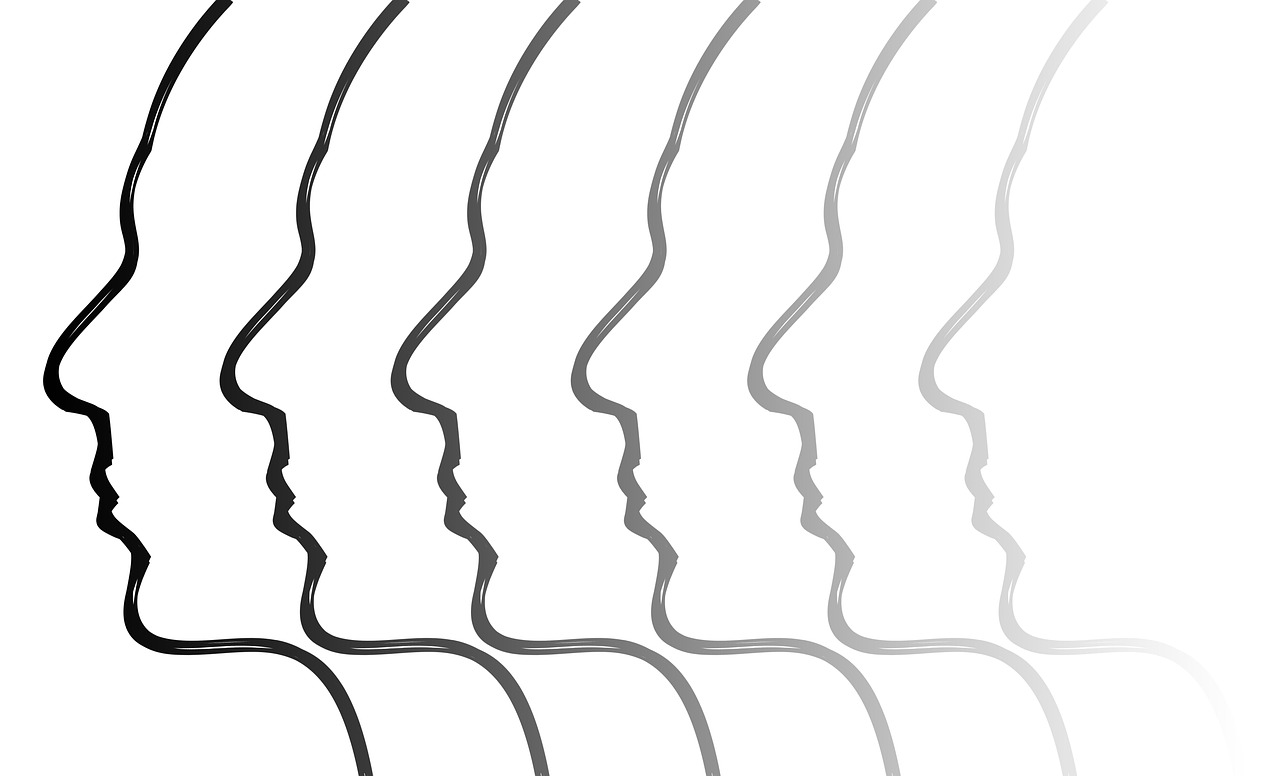Written by Najwa Bashir
You might have seen or heard about The Big 5 Personality Inventory or Tests when reading about personality types, but what is it actually? Well, these tests or inventories are based on The Big 5 Personality Traits, grounded in the Trait Theory in personality psychology. Too much to digest? Let me define these terms for you to simplify things.
Personality Psychology
Personality psychology is a discipline of psychology that examines the characteristics and definition of personality, as well as its advancement, structure, traits, dynamic processes, fluctuations (with a focus on long-lasting and consistent individual variances), and dysfunctional forms. There is a long history of theories in this field, such as trait theories, psychoanalytic theories, role theories, learning theories, and type theories. These theories have tried to make sense of the different cognitive, emotional, motivational, developmental, and social aspects of human nature by putting them all together into a single framework. It has also come up with a lot of tests and evaluations to measure and understand different parts of psychology (American Psychological Association, 2018), one of which is The Big 5 Personality Test based on the trait theory.
Now, let’s move toward the trait theory to understand the background of The Big 5 Personality Traits.
Trait Theory
Trait theory is one of the most important science models for studying and explaining behavior. Modern approaches to traits have to deal with issues like creating an objective personality traits assessment, linking the descriptive traits with explanatory processes, using traits to understand the unique person, making the link between traits and behavior clear, and using traits to address central issues in personality psychology (for example, personality organization) (Fajkowska & Kreitler, 2018).
The Big 5 Personality Traits
The Big Five Personality Traits, often known as OCEAN or CANOE, is a psychological model that covers five major personality dimensions: openness, conscientiousness, extraversion, agreeableness, and neuroticism. These characteristics are thought to remain largely constant during a person’s lifespan. For the most of an individual’s life, the Big Five stay largely constant. With an estimated 50% heritability, they are greatly impacted by both genes and environment. Additionally, they forecast key life outcomes including health and education. Every characteristic is a continuum. For each attribute, an individual can be anywhere along the continuum. The Big Five Model contends that every personality feature is a spectrum, in contrast to other trait theories that divide people into binary groups (such as introvert or extrovert). As a result, people are placed on a scale that ranges from the two extremes of five broad dimensions (Lim, 2023).
Ernest Tupes and Raymond Christal, research psychologists at the Texas Lackland Air Force Base, developed the original model in 1958, but it was not until the 1980s that academics and scientists began to take notice of it. J.M. Digman developed his five-factor model of personality in 1990; Lewis Goldberg ranked it as the most highly organized. The majority of recognized personality traits have been discovered to be present in these five broad categories, which are thought to constitute the fundamental framework for all of them.
The Big 5 Personality Tests or Inventories you see online is based on this 5 factor model and it assess where you lie on the continuum of each attribute. Now, let me give you a broader view of these personality traits.
The five-factor model (FFM; Digman, 1990 as cited in Chmielewski & Morgan, 2013), or the “Big Five” (Goldberg, 1993 as cited in Chmielewski & Morgan, 2013), consists of five broad trait dimensions of personality. These traits represent stable individual differences (an individual may be high or low on a trait as compared to others) in the thoughts people have, the feelings they experience, and their behaviors. The FFM includes Neuroticism, Extraversion, Openness, Agreeableness, and Conscientiousness (Chmielewski & Morgan, 2013).
The following are the features of individuals possessing each of these traits (Darby, 2024):
Neuroticism
Sorrow irritability, and mental instability are all signs of neuroticism. Neuroticism is a person’s physical and mental reaction to stress and perceived danger in their daily life. It is often mistaken for antisocial behavior or, worse, a bigger psychological problem. People with high amounts of neuroticism often have mood swings, worry, and anger. People who go through quick changes in their personality every day might be highly anxious and react to a lot of stress at work and in their personal lives.
Anxiety, which is a major component of neuroticism, refers to a person’s ability to deal with strain as well as imagined or real danger. A person with neuroticism will think too much about many things and have trouble relaxing, even in their own place. On the contrary, people who are less neurotic are thought to be more steady and able to handle stress and difficult conditions better. Low anxious people also don’t feel sad or unhappy very often because they focus on the present moment and don’t think about things that might make them stressed.
Extraversion
Extraversion, which is also known as Extroversion, is a personality trait that many people have experienced. There’s no doubt that individuals scoring high on this trait get a lot of energy from being around other people. Being talkative, forceful, and showing a lot of feeling are some of the other traits that have made extraverted people easy to spot over many years of socializing.
There’s always at least one friend or family member who doesn’t exactly blend in when we’re with other people. They love being the center of attention, meeting new people, and having the most friends and acquaintances of anyone you know. The opposite is, of course, an introvert. Introverts rather be alone and have less energy when they are with other people. It can be very hard to be the center of attention or make small talk. Extroverts often work in jobs where they have to deal with a lot of people, like sales, marketing, teaching, and politics. Extroverts are more likely to take the lead than to just stand there and look like they’re not doing anything.
Openness
Openness is a trait that includes having creativity and understanding. This psychological trait has a lot to do with the world, other people, and wanting to learn and try new things. This makes you interested in many things and more willing to take risks when making choices.
Being creative is also a big part of being open, which makes it easier to think about things in a new or different way. Imagine someone who always chooses the craziest item on the menu, travels to strange places, and is interested in things you would never think of! In this case, the person is very open. On the contrary, people who are low in this trait tend to have more standard views on life and may find it hard to solve problems that are outside of their area of expertise.
Agreeableness
People with a high agreeableness score will believe, care about others, be kind, and love others. People who are very agreeable are more likely to be highly prosocial, which means they want to help other people. Sharing, being comforting, and working together are all traits that make people easily get along with others. People usually think of empathy as a type of agreeableness, even though the word doesn’t really fit.
Disagreeableness is the opposite of agreeableness, but it shows up as socially awkward behavior. A lot of people are mean and manipulative to others, don’t care or sympathize with them, and aren’t interested in their issues.
People who are agreeable usually work in fields where they can make the most difference. People who work in mental health, medicine, soup kitchens, charity, and the third sector (social studies) are rated highly on the agreeableness scale.
Conscientiousness
Conscientiousness is an attribute that is characterized by high levels of thinking, good impulse control, and goal-oriented actions. People who work in science or even high-level business, where attention to detail and planning are important skills, often take this structured and organized approach. Someone who is very responsible will often think about what they are going to do and how their actions might affect other people. People who are very careful are often hired by project management teams and human resources departments to help balance out the structural roles in the general team growth.
Someone who always plans ahead for the next time they see you and also stays in touch with you on a regular basis to see how you’re doing is an example of a responsible person. They plan their days around events and dates and pay attention to you when you meet. On the other hand, people who are not very conscientious often don’t like order and plans, put off doing important things, and then don’t finish them.
Now that you have a clear picture of The Big 5 Personality Traits in Psychology, how would you rate yourself on a scale from 0 to 10 in case of each of the five traits? Write your answers in the comment section and I shall respond!
References
- American Psychological Association (2018). APA Dictionary of Psychology. Retrieved from https://dictionary.apa.org/personality-psychology
- Chmielewski, M.S. & Morgan, T.A. (2013). Five-Factor Model of Personality. In: Gellman, M.D., Turner, J.R. (eds) Encyclopedia of Behavioral Medicine. Springer, New York, NY. https://doi.org/10.1007/978-1-4419-1005-9_1226
- Darby, J. (2024). What Are The Big 5 Personality Traits? Thomas. Retrieved from: https://www.thomas.co/resources/type/hr-guides/what-are-big-5-personality-traits#:~:text=The%20five%20broad%20personality%20traits,openness%2C%20conscientiousness%2C%20and%20neuroticism.
- Fajkowska, M., & Kreitler, S. (2018). Status of the trait concept in contemporary personality psychology: Are the old questions still the burning questions? Journal of personality, 86(1), 5-11. https://doi.org/10.1111/jopy.12335
- Lim, A. G. (2023). Big five personality traits: the 5-factor model of personality. Simply Psychology. Available at: https://www.simplypsychology.org/big-five-personality.html#Agreeableness
I am a passionate and knowledgeable psychologist, with a Master of Philosophy (MPhil) in Psychology specializing in Counseling Psychology. Through my writing, I share my insights and thoughts on various psychiatric disorders, conduct analysis on films that touch on psychological issues, and explore other topics related to psychology, while also providing valuable information to psychology enthusiasts, students as well the general community.





